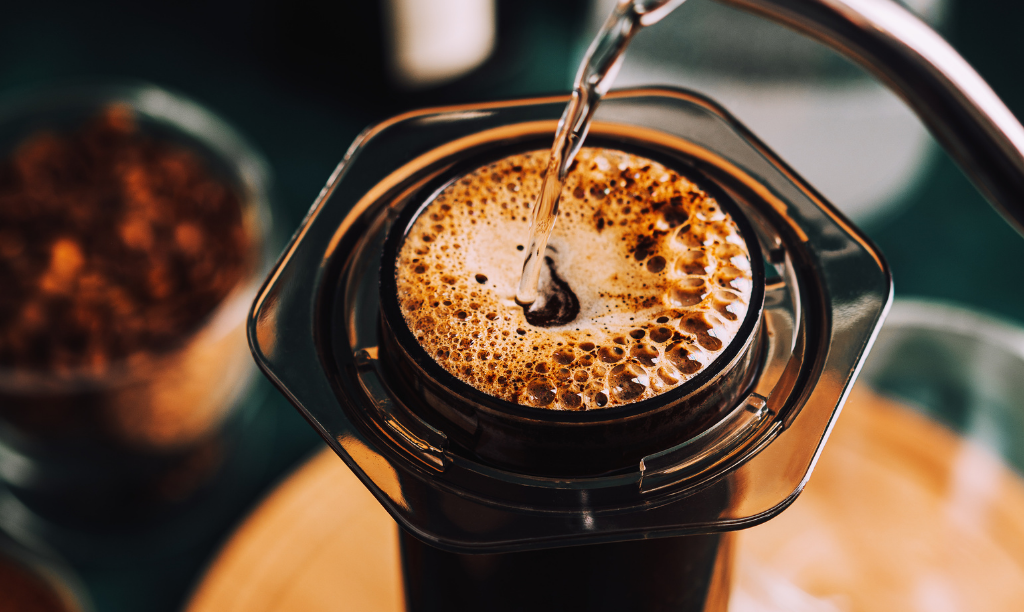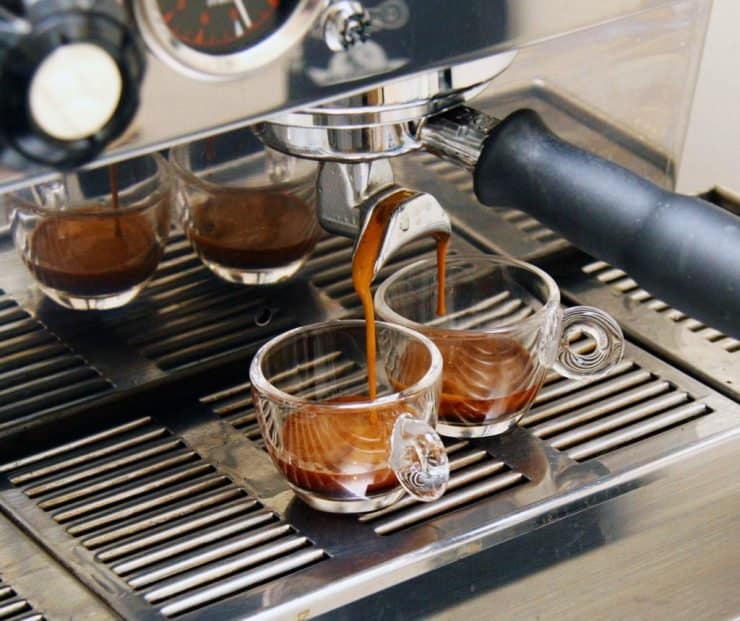The Scientific Research Behind Coffee Developing: Exactly How Temperature Level and Time Affect Your Drink
Recognizing the science behind coffee developing discloses that temperature and time are not simple variables but critical aspects that determine the drink's taste account and general quality. The optimum brewing temperature level usually falls in between 195 ° F and 205 ° F, while the period of removal varies significantly across various techniques. This interaction of factors can result in a cup that is either delightful or disappointing. As we explore the subtleties of these components, the inquiry develops: just how can one properly equilibrium temperature level and time to accomplish that excellent brew?
The Chemistry of Coffee Extraction
The chemistry of coffee removal explores the elaborate procedures that transform raw coffee beans into the fragrant drink delighted in worldwide. This transformation primarily entails the solubility of different substances existing in the beans, which are influenced by factors such as grind size, water top quality, and the brewing method employed.
During the developing procedure, hot water works as a solvent, removing soluble substances, including caffeine, sugars, acids, and lipids, from the coffee grounds. Each compound adds to the taste account, fragrance, and body of the final drink. For circumstances, acids are liable for appetizing and intense notes, while oils add to a rich mouthfeel.
The initial phases of brewing essence acids and sugars, leading to a positive acidity, while prolonged extraction can lead to bitterness due to over-extraction of unwanted substances. Understanding these chemical interactions is important for enhancing brewing techniques, as the balance in between extraction time and water temperature level can substantially influence the total quality of the coffee.
Ideal Developing Temperatures
Finding the ideal developing temperature is necessary for unlocking the full capacity of coffee flavors and scents - coffee brewing methods. Research indicates that the optimum array for developing coffee exists in between 195 ° F to 205 ° F(90 ° C to 96 ° C) Within this range, the extraction process properly liquifies the preferable soluble substances in coffee beans, causing a balanced and delicious mug
Developing at lower temperatures, such as listed below 195 ° F(90 ° C ), may lead to under-extraction, producing a weak and acidic mixture with muted tastes. Alternatively, brewing at temperatures surpassing 205 ° F(96 ° C) can lead to over-extraction, producing a severe and bitter preference because of the extreme dissolution of unwanted substances, such as tannins.
Furthermore, the excellent developing temperature level can vary relying on the coffee bean type and roast level. For instance, lighter roasts typically gain from somewhat greater temperatures to enhance their complicated taste profiles, while darker roasts may be much better suited to lower temperature levels to reduce anger.
Eventually, preserving precision in developing temperature levels is essential for achieving an unified equilibrium of flavors, guaranteeing that every cup of coffee supplies an enjoyable sensory experience.
Effect of Brewing Time
Brewing time plays a crucial function in figuring out the taste profile and pop over to these guys general quality of coffee. Much shorter developing times can result in under-extraction, leading to a sour or weak flavor, as not adequate soluble substances are dissolved.
Optimal developing time differs depending upon the method used and the grind dimension of the coffee. A French press usually needs regarding 4 mins, while coffee removal is normally finished within 25 to 30 seconds. It is vital to calibrate brewing time in conjunction with other variables, such as water temperature and coffee-to-water proportion, to attain the wanted taste account.
Recognizing the effect of developing time makes it possible for coffee lovers to fine-tune their developing strategies, inevitably boosting the sensory experience of their cup (coffee brewing methods). With cautious attention to this variable, one can unlock the complete potential of the coffee, disclosing its unique qualities and nuances
Brewing Approaches and Their Results

For example, methods like French press and chilly mixture enable for a much longer steeping time, leading to a fuller body and robust flavor due to boosted extraction of oils and soluble solids. Conversely, coffee developing utilizes high stress and a much shorter removal time, generating a concentrated shot that stresses extreme flavors and an abundant crema.
Pour-over techniques, such as Chemex or V60, offer a more controlled removal process, permitting the brewer to adjust flow rate and water distribution, which can enhance brightness and clarity. Meanwhile, percolation approaches cycle water via the coffee grounds numerous times, leading to a more powerful, usually bitter taste.
Last but not least, using paper filters versus metal filters can additionally impact the last preference; paper filters generally generate a cleaner mug by trapping oils and fine particles, while metal filters permit even more oils to pass through, adding to a fuller mouthfeel - coffee brewing methods. Comprehending these subtleties can elevate the coffee experience considerably
Tips for Improving Your Mixture
A well-executed brew can transform even the simplest coffee into an amazing experience. To attain this, interest to information is necessary. Start with top quality, fresh roasted beans, as their flavor account diminishes in time. Grind the beans prior to brewing to take full advantage of freshness, ensuring the grind size matches your brewing technique-- coarser for French press and finer for espresso.
Water high quality plays a critical duty; use filtered water devoid of contaminations. The optimal brewing temperature level ranges in between 195 ° F and 205 ° F(90 ° C to 96 ° C ) Also warm can scorch the coffee, while also great might under-extract tastes.
Timing is just as essential. For immersion approaches, steeping for 3 to five mins is ideal, whereas drip methods typically take about five minutes. Try out brew times to locate your preferred stamina.

Conclusion
In recap, the intricate connection in between temperature and time is paramount in the coffee developing procedure. Comprehending these scientific concepts encourages people to refine their brewing strategies, ultimately leading to a more enjoyable and balanced coffee experience.
Understanding the science behind coffee developing reveals that temperature level and time are not plain variables but pivotal aspects that dictate the beverage's taste account and general high quality. Understanding these chemical interactions is vital for maximizing brewing techniques, as the balance in between removal time and water temperature can substantially affect the overall high quality of the coffee.Developing time plays a crucial role in establishing the taste account and total quality of coffee. By concentrating on these elements-- bean high quality, grind size, water temperature level, soaking time, and proportion-- you can elevate your coffee brewing procedure, resulting in a constantly exceptional mug.
In summary, the More about the author intricate connection between temperature level and time is extremely important in the coffee brewing process.